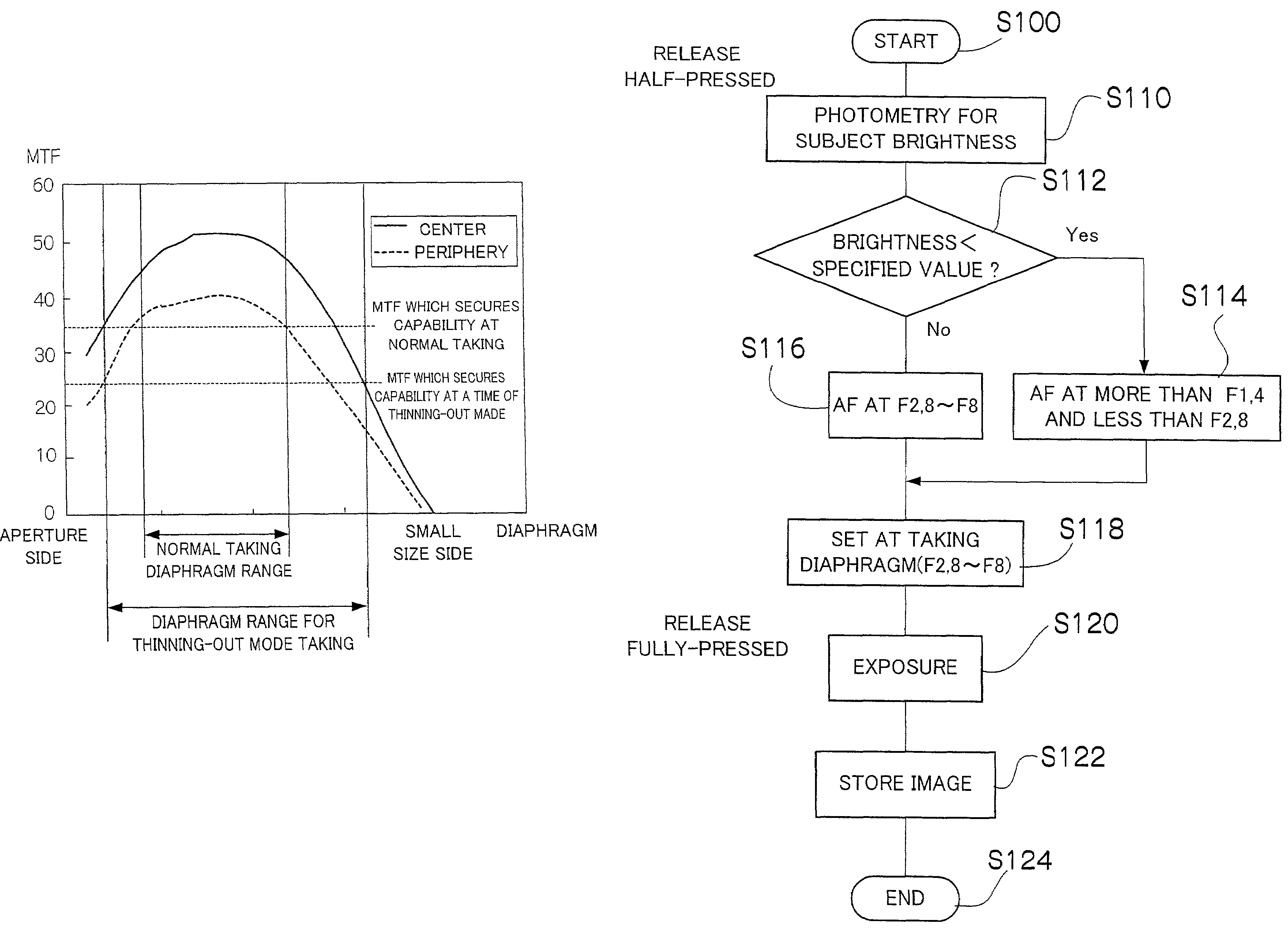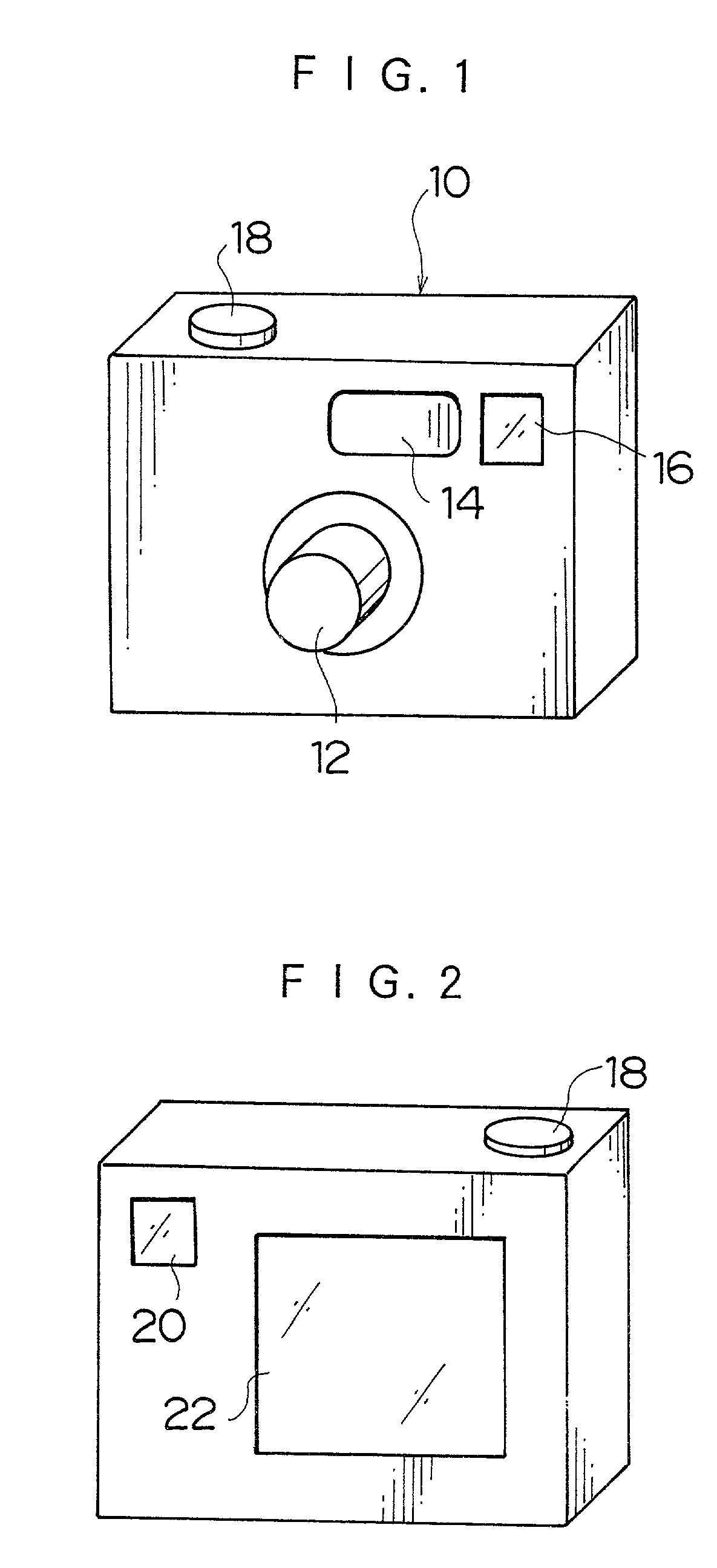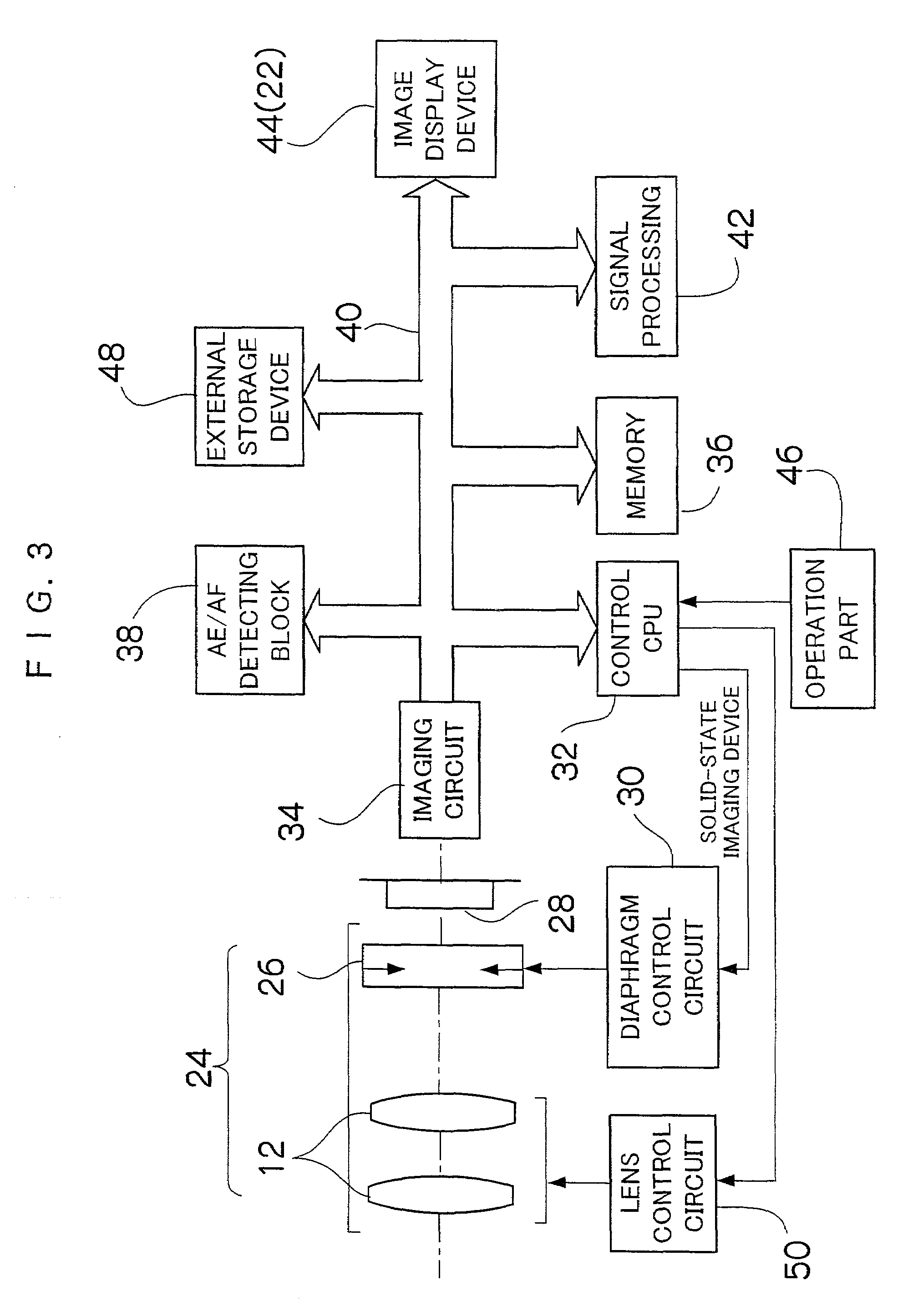Camera, aperture controlling method and apparatus, lens controlling method and apparatus, and edging amount controlling method and apparatus
a technology of aperture control and lens control, applied in the field of camera, aperture lens edging amount control method and apparatus, can solve the problems of poor photometry capability at a low brightness, easy vibration of the camera, and deterioration of the image quality of the movie display for confirming a view angle, so as to reduce the resolution and reduce the image quality of the optical system. , the effect of lowering the resolution
- Summary
- Abstract
- Description
- Claims
- Application Information
AI Technical Summary
Benefits of technology
Problems solved by technology
Method used
Image
Examples
embodiment 1
Alternative Embodiment 1
[0136]FIGS. 16 and 17 are views showing an outer appearance of a camera 70 and FIG. 18 is a block diagram of the camera 70 in the alternative embodiments of the present invention. The parts which are similar or the same as those of the camera 10 are assigned the same reference numbers, and the description on them is omitted.
[0137]A wide conversion lens 72 can be attached to the top end of the barrel of the camera 70 in FIG. 16. Moreover, the camera 70 has the mode dial 13, and the photometry sensor 15 comprising an AF illuminating part 15A and an AF light receiving part 15B is disposed at the front face of the camera. An active sensor is used in the present embodiment, but the photometry sensor is not limited to that; sensors such as a phase contrast sensor of a passive format may be used.
[0138]The mode dial 13 is a means for selecting operation modes of the camera. Modes such as a set up mode, a successive taking mode, a manual taking mode, an automatic taki...
embodiment 2
Alternative Embodiment 2
[0153]Next, another alternative embodiment of the present invention will be described. FIG. 20 is a block diagram of a camera 90 of the present embodiment. The same or similar parts as those in FIG. 3 are assigned the same reference numbers and the description on them is omitted.
[0154]A taking system (the taking lens 12) of the camera 90 in FIG. 20 has a zoom lens 91 and a focus lens 92. A lens group 91A and a lens group 91B move along an optical axis while a positional relationship between the two lens groups 91A and 91B is regulated by the cam mechanism (not shown) in order to change a focal length. A zoom control circuit 94 controls driving of the zoom lens 91 in accordance with an instruction from the control CPU 32. The focus lens 92 contributes to focus adjustment. A focus control circuit 95 controls driving of the focus lens 92 in accordance with an instruction from the CPU 32.
[0155]A signal from the operation part such as the release switch 18 and the...
embodiment 3
Alternative Embodiment 3
[0162]FIGS. 21 and 22 show an embodiment for use at outside the range which secures the capability with respect to the focus position (focus), but there is also am embodiment for use at outside the range which secures the capability with respect to the focal length (zoom). FIGS. 23 and 24 show the relationship between the focal length and the lens capability.
[0163]FIG. 23 shows a graph of a relationship between the focal length and the MTF (when taking under low resolution). As seen from FIG. 23, an area where the MTF at the center and the periphery is 35% or more in the normal taking is the level which secures the capability, by which the regulation at a telephoto side is decided; in short, a focal length changeable range (zoom range) in the normal taking is regulated as shown in (4).
[0164]In the low resolution, however, the taken image is not affected despite the MTF being lowered down to 20%, so the taking at a side which is still closer to the telephoto s...
PUM
 Login to View More
Login to View More Abstract
Description
Claims
Application Information
 Login to View More
Login to View More - R&D
- Intellectual Property
- Life Sciences
- Materials
- Tech Scout
- Unparalleled Data Quality
- Higher Quality Content
- 60% Fewer Hallucinations
Browse by: Latest US Patents, China's latest patents, Technical Efficacy Thesaurus, Application Domain, Technology Topic, Popular Technical Reports.
© 2025 PatSnap. All rights reserved.Legal|Privacy policy|Modern Slavery Act Transparency Statement|Sitemap|About US| Contact US: help@patsnap.com



